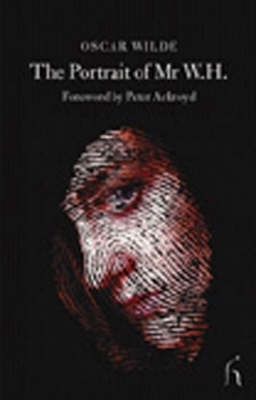Reviewed by Michael @ Knowledge Lost on
The Portrait of Mr. W.H. is a short story by Oscar Wilde; it only took me about twenty minutes so I don’t think I’ll say much about it but it was a story I wanted to review. Yes, it was required reading for university but it was an interesting enough piece that getting my thoughts down seemed like a good idea. I remember reading The Picture of Dorian Gray a long time ago and not getting on with it; maybe I wasn’t for me or maybe I just hadn’t had the literary knowledge to get something out of it. In any case, I’m curious enough that maybe Dorian Gray will be a reread in the future.
I want to compare The Portrait of Mr. W.H. with My Life as a Fake because they both seem to talk about a similar topic. While My Life as a Fake covered a literary hoax, The Portrait of Mr. W.H. looks at a piece of literary criticism that has been around for a long time and is often talked about. I don’t agree with this theory and it is important to know that Oscar Wilde didn’t either, although by the end he almost did. What I really liked about this story is the fact that Wilde took a differing view of the Sonnets and tried to explore it. This is an excellent example of literary criticism because it got me looking at the Sonnets in another way, even if I didn’t agree with it.
The fact that Oscar Wilde managed to write this literary criticism in a form of a story was equally impressive. The whole story has this real gothic feel about it and the character of Willie Hughes showed vampiric characteristics in the way he destroyed lives, in particular Cyril’s. Yet another similarity to My Life as a Fake is the whole idea that literature or the author can be portrayed as a monster.
I read this story as social criticism, looking at the homo-eroticism of Shakespeare’s Sonnets and question if a particular piece of text has any effect on the value of the art form. I don’t know many people complaining about the homoerotic nature of Shakespeare but I’ve heard complaints about it when referring to Oscar Wilde. Wilde was a big believer in celebrating art as being art and not letting the opinion of the artist affect it. This means The Portrait of Mr. W.H. is a satirical look at the art, where you have to take a more literal approach and explore the life of William Shakespeare as an artist and its connection to the Sonnets.
Oscar Wilde tantalises the reader with his literary and social criticism, mix in the satirical nature of this story and the wit of the author and you have a compelling read. One thing I’ve been thinking about is the connection between this story and The Picture of Dorian Gray which I would like to leave you with. They both share very similar titles but in Dorian Gray you have a portrait that ages and the reader see the truth, of Gray and all his sins. While in The Portrait of Mr. W.H. the picture of Willie Hughes is a lie and I have to wonder the meaning behind this imagery when comparing the two.
This review originally appeared on my blog; http://literary-exploration.com/2014/02/27/the-portrait-of-mr-w-h-by-oscar-wilde/
Reading updates
- Started reading
- 12 February, 2014: Finished reading
- 12 February, 2014: Reviewed
